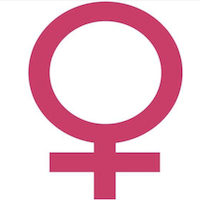The impact of orthotopic reconstruction on female sexuality and quality of life after radical cystectomy for non-malignant bladder conditions

Accepted: April 23, 2021
All claims expressed in this article are solely those of the authors and do not necessarily represent those of their affiliated organizations, or those of the publisher, the editors and the reviewers. Any product that may be evaluated in this article or claim that may be made by its manufacturer is not guaranteed or endorsed by the publisher.
Authors
Objective: To review the literature on the impact on female quality of life and sexual function of orthotopic reconstruction after radical cystectomy for non-malignant bladder conditions. Radical cystectomy is commonly required to treat malignant conditions but may also be considered for the treatment of non-malignant diseases. These heterogeneous group of disorders includes interstitial cystitis, painful bladder syndrome, neurogenic bladder, haemorrhagic/ radiation cystitis, endometriosis and refractory genitourinary fistula. Treatment begins with non-invasive medical therapies but, in non-responder cases, a surgical solution should be considered. Such invasive techniques include urinary diversion and reconstructive procedures that have an impact on healthrelated quality of life, physical, social, and mental status.
Materials and methods: This narrative review research was done using the PubMed database up until 2020, July. All papers referring to cystectomy for benign indication were considered.
Results: In comparison to other reconstructive options, orthotopic neobladder allows the restoration of a normal self-image and consequently it is the most suitable procedure when a surgical reconstruction is necessary for non-malignant conditions. However, women can face many disorders that impact on everyday life, such as voiding dysfunction or sexual activity problems.
Conclusions: Scant data is available about quality of life, sexual life and self-perception in women treated by cystectomy for benign conditions and most literature is dedicated to those indicators in cancer patients. More research is needed to understand the tolerability and the quality of life results of the female population affected by benign conditions undergoing this kind of surgical approach.
How to Cite
PAGEPress has chosen to apply the Creative Commons Attribution NonCommercial 4.0 International License (CC BY-NC 4.0) to all manuscripts to be published.

 https://doi.org/10.4081/aiua.2021.3.255
https://doi.org/10.4081/aiua.2021.3.255



